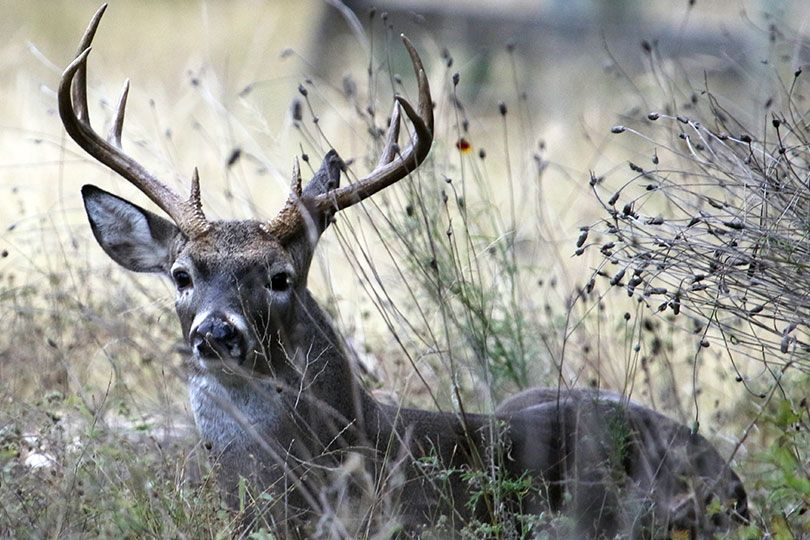The Lone Star State’s early hunting season for white-tailed deer is underway, and state wildlife biologists expect prospects for both the early archery season and the later general gun season to be good across the state.
The archery-only season opened Sept. 30. The general gun season opener is Nov. 4. A special youth-only weekend is set for Oct. 28-29.
The general season runs through Jan. 7, 2018 in North Texas and Jan. 21, 2018 in South Texas. A late youth-only season is also slated for Jan. 8-21, 2018. For additional late season deer hunting opportunities and county-specific regulations, consult the 2017-18 Outdoor Annual of hunting and fishing regulations.
In general, white-tailed deer in Texas have fared well in recent years with a stable population of about 4.3 million, according to Alan Cain, Texas Parks and Wildlife Department (TPWD) white-tailed deer program leader.
“The vast majority of the state had good habitat conditions going into last winter and early spring, which helped bucks recover from the rigors of the rut and gave them a good foundation to start the antler growth cycle this year,” he said.
Unlike the previous two years, however, where widespread consistent rain and good habitat conditions persisted through the summer for much the state, this year saw dry weather patterns take hold in May and continue into late August. These drier conditions late in the season will likely have some impact on final stages of antler development, body weights and possibly fawn production, Cain said, but hunters should still expect a good hunting season.
“Dry conditions were not uniform across the state, and spotty rains from May through July left patches of green across the landscape in the western two-thirds of the state,” Cain said. “Landowners and hunters with properties lucky enough to receive some of the early summer rains and that have remained green may expect better than average deer quality this fall.”
Although rainfall was more consistent in the eastern portion of the state, keeping the habitat in good shape, it was still drier than last year with the exception of southeast Texas where a deluge of rain from Hurricane Harvey left many river and creek bottom habitats flooded for a short term in late August.
“Some adult deer and fawn mortalities were possible due to flooding, but with water receding relatively quickly, the vegetation in these bottomland habitats will be able to recover quickly,” Cain said. “Hunters should be cognizant that deer displaced by the flooding were forced into upland habitats, increasing deer densities beyond what is normally seen in these areas. As such, hunters might be cautious about over-harvesting deer displaced by flooding.”
Overall, Cain predicts Hurricane Harvey will not have a significant impact on the deer populations in southeast Texas, but hunting conditions may be a little tougher this season with the flush of vegetation growth that will likely occur in the next month or two.
Hunters are reminded of new regulations for the 2017-18 season, including the establishment of chronic wasting disease (CWD) management zones.
Hunters who harvest mule deer, white-tailed deer, elk, red deer or other CWD-susceptible species within the Trans-Pecos, Panhandle and South Central Texas CWD Containment and Surveillance Zones are required to bring their animals to a TPWD check station within 48 hours of harvest.
TPWD also urges voluntary sampling of hunter-harvested deer outside of these zones.
Hunters should also be aware of rules banning importation of certain deer, elk and other CWD-susceptible species carcass parts from states where the disease has been detected, as well as the movement of the same carcass parts from CWD zones. The rules are part of the state’s comprehensive CWD management plan to determine the prevalence and geographic extent of the disease and to contain the disease to the areas where it is known to exist.
More information about CWD management and regulations for hunters is available at www.tpwd.texas.gov.

